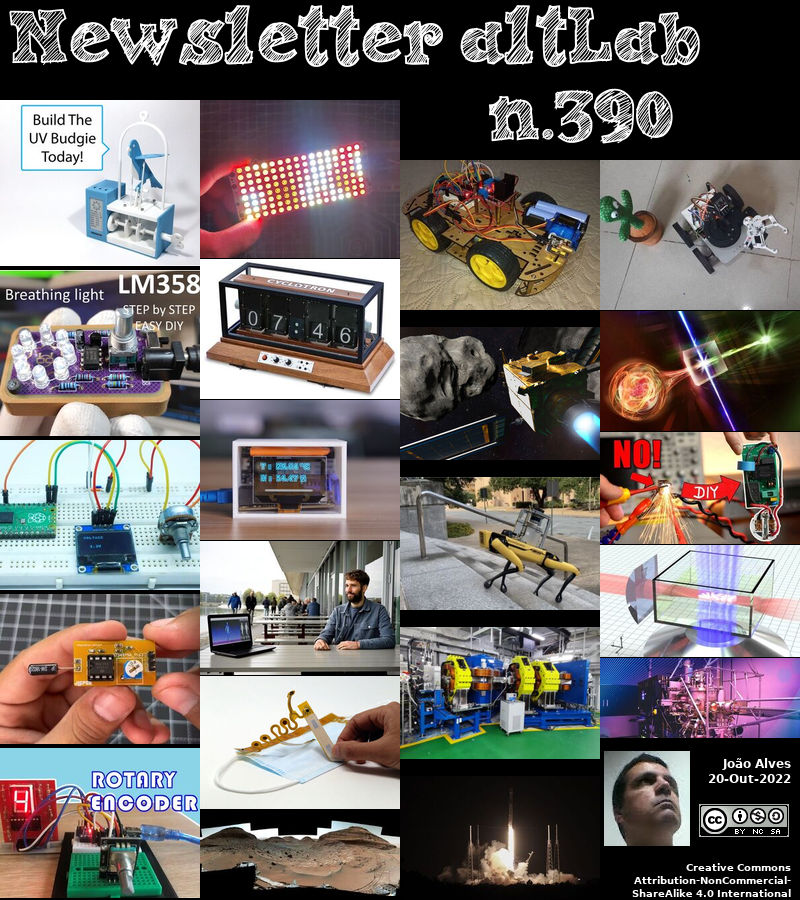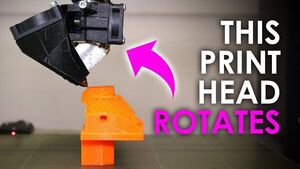2022-10-20 - Nº 390
Editorial
Esta é a Newsletter Nº 390 que se apresenta com o mesmo formato que as anteriores. Se gostar da Newsletter partilhe-a!
Todas as Newsletters encontram-se indexadas no link.
Esta Newsletter tem os seguintes tópicos:
Faz hoje anos que nascia, em 1616, o anatomista e matemático dinamarquês Thomas Bartholin. Ele foi o primeiro a descrever completamente todo o sistema linfático humano (1652) e um dos primeiros defensores da descoberta de Harvey da circulação do sangue. Entrou para a faculdade de matemática (1647-49), depois foi professor de anatomia (1649-61) na Universidade de Copenhaga. Publicou muitos trabalhos sobre anatomia, fisiologia e medicina, (1645-74) e um trabalho geral sobre farmacologia (1658). Em 1654, Bartholin e a faculdade de medicina da sua universidade publicaram conselhos sobre como as pessoas podiam cuidar de si próprias durante a peste. Depois de uma propriedade comprada por Bartholin (1663) ter sido destruída pelo fogo em 1670, o rei Christian V pagou-lhe um salário anual como seu médico pessoal, embora os seus serviços fossem raramente necessários.
Faz igualmente hoje anos que nascia, em 1891, o físico inglês James Chadwick. Ele recebeu o Prémio Nobel da Física (1935) pela sua descoberta do neutrão. Estudou em Cambridge, e em Berlim sob a orientação de Geiger, tendo depois trabalhado no Laboratório Cavendish com Rutherford, onde investigou a estrutura do átomo. Trabalhou na dispersão de partículas alfa e na desintegração nuclear. Ao bombardear berílio com partículas alfa, Chadwick descobriu o neutrão - uma partícula neutra no núcleo do átomo - pelo qual recebeu o Prémio Nobel da Física em 1935. Em 1932, Chadwick cunhou o nome "neutrão", que descreveu num artigo da revista Nature. Liderou o trabalho do Reino Unido sobre a bomba atómica na II Guerra Mundial, e foi nomeado cavaleiro em 1945.
Em 1906, o Dr. Lee DeForest (26 Aug 1873 - 30 Jun 1961), um dos "pais da rádio", anunciou o seu tubo de vácuo eléctrico de três elementos (agora conhecido como triodo) numa reunião do Instituto Americano de Engenheiros Electrotécnicos. Ele tinha descoberto que quando uma malha, ou grelha, de arame era colocada entre o filamento e a "placa" colectora num tubo de díodo (feito pela primeira vez por J. Ambrose Fleming, 1904), um grande efeito amplificador de tensão podia ser produzido. A DeForest patenteou este tubo de vácuo em 15 de Janeiro de 1907. A capacidade deste tubo para amplificar sinais fracos era uma invenção tão grande como o próprio rádio, porque tornava possível a comunicação de longa distância.
Em 1983, a quinta definição legal do metro foi a distância que a luz percorre no vácuo em 1/299.792.458 de um segundo. comprimento do metro foi redefinido na 17ª reunião do organismo internacional Conférence Générale des Poids et Mesures (GCPM) por um método para dar maior precisão. Superou a quarta definição legal adoptada em 14 de Outubro de 1960 com base numa linha espectral de kryton. As definições anteriores incluíam a distância entre as marcas no protótipo internacional de barra métrica feita de liga de platina e irídio (28 de Setembro de 1889). Antes disso, foi decidido que o metro deveria ser um décimo-milionésimo da distância do Pólo Norte ao equador (1 de Agosto de 1793), e o conceito mais antigo era o comprimento de um pêndulo com meio período de um segundo (8 de Maio de 1790).
E nesta semana que passou a canonical lançou o Ubuntu 22.10. Com o nome de código "Kinetic Kudu", esta versão inclui as mais recentes toolchains de ferramentas e aplicações com particular incidência no ecossistema da Internet das Coisas. Esta nova versão desta distribuição trás o Kernel 5.19 do Linux acompanhado pelo GNOME 43. Adicionalmente trás atualizações nos subsistemas Mesa, Pipewire, BlueZ e CUPS para além das ultimas versões do Firefox, do LibreOfficee e do Thunderbird.
Na Newsletter desta semana apresentamos diversas noticias, artigos científicos, projetos de maker e alguns vídeos interessantes. É apresentada a revistar HackSpace Magazine nº 60 de Novembro.
 João Alves ([email protected])
João Alves ([email protected])
O conteúdo da Newsletter encontra-se sob a licença  Creative Commons Attribution-NonCommercial-ShareAlike 4.0 International License.
Creative Commons Attribution-NonCommercial-ShareAlike 4.0 International License.
Novidades da Semana

Canonical releases Ubuntu 22.10 Kinetic Kudu
"Codenamed “Kinetic Kudu”, this interim release improves the experience of enterprise developers and IT administrators. It also includes the latest toolchains and applications with a particular focus on the IoT ecosystem. “Connected devices are an exciting area of innovation that also create new digital risks in the home and the business. We are focused on enabling a new generation of easy to use and highly secure IoT, so these developers in particular will find a number of quality of life improvements for embedded device and remote development in Ubuntu 22.10”, said Mark Shuttleworth, CEO of Canonical. ”This release also brings new capabilities to our enterprise management story. The new Landscape beta makes it easier than ever to administer your entire Ubuntu estate across any architecture”." [...]
Outras Notícias

Samsung Electronics Introduces Industry’s Fastest LPDDR5X DRAM at 8.5Gbps
"Samsung Electronics, the world leader in advanced memory technology, today announced that its latest LPDDR5X DRAM with the industry’s fastest speed of 8.5 gigabits per second (Gbps) was validated for use on Snapdragon® mobile platforms. By optimizing a high-speed signal environment between application processor and memory, Samsung has surpassed the previous maximum speed of 7.5Gbps achieved in March, reaffirming its leadership in the memory market. As a global leader in the mobile DRAM market for more than a decade, Samsung has been driving mainstream adoption of high-end smartphones, enabling many more consumers to experience powerful computing performance on their mobile devices. Thanks to its low-power and high-performance characteristics, LPDDR DRAM is quickly becoming pervasive in modern computing systems, expanding beyond smartphones and into PCs, high-performance computing (HPC), servers and automobiles, where it has enjoyed robust growth in the last few years. Recently, LPDDR DRAM has seen especially high demand from the PC market, where its ability to combine high performance and low-power consumption in a small form factor is helping PC makers build smaller, lighter and more powerful laptops. LPDDR memory is also an increasingly important component in modern vehicles." [...]
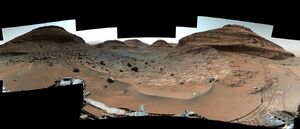
NASA’s Curiosity Mars Rover Reaches Long-Awaited Salty Region
"The rover has arrived at a special region believed to have formed as Mars’ climate was drying. After journeying this summer through a narrow, sand-lined pass, NASA’s Curiosity Mars rover recently arrived in the “sulfate-bearing unit,” a long-sought region of Mount Sharp enriched with salty minerals. Scientists hypothesize that billions of years ago, streams, and ponds left behind the minerals as the water dried up. Assuming the hypothesis is correct, these minerals offer tantalizing clues as to how – and why – the Red Planet’s climate changed from being more Earth-like to the frozen desert it is today. The minerals were spotted by NASA’s Mars Reconnaissance Orbiter years before Curiosity landed in 2012, so scientists have been waiting a long time to see this terrain up close. Soon after arriving, the rover discovered a diverse array of rock types and signs of past water, among them popcorn-textured nodules and salty minerals such as magnesium sulfate (Epsom salt is one kind), calcium sulfate (including gypsum), and sodium chloride (ordinary table salt)." [...]

Small and flexible synchronous buck controller from STMicroelectronics handles extreme step-down ratios
"With compact dimensions and an input-voltage range from 6V to 75V, STMicroelectronics’ L3751 synchronous buck controller serves different applications from industrial equipment to battery powered light electric vehicles. The 3.5mm x 4.5mm controller is also suited to use in telecom and networking equipment that feature commonly used 24V and 48V buses. Having minimum on-time duration of 40ns, the L3751 can support an extremely low duty cycle thereby permitting a large step-down ratio. This allows powering low-voltage devices directly without intermediate conversion, which helps simplify circuit design and lower bill-of-materials (BOM) costs. The device integrates a 7.5V supply for the gate drivers. In addition to having a wide supply-voltage range, the L3751 has 100V-tolerant inputs that allow operation in harsh electrical environments." [...]

NASA Telescope Takes 12-Year Time-Lapse Movie of Entire Sky
"Pictures of the sky can show us cosmic wonders; movies can bring them to life. Movies from NASA’s NEOWISE space telescope are revealing motion and change across the sky. Every six months, NASA’s Near-Earth Object Wide Field Infrared Survey Explorer, or NEOWISE, spacecraft completes one trip halfway around the Sun, taking images in all directions. Stitched together, those images form an “all-sky” map showing the location and brightness of hundreds of millions of objects. Using 18 all-sky maps produced by the spacecraft (with the 19th and 20th to be released in March 2023), scientists have created what is essentially a time-lapse movie of the sky, revealing changes that span a decade. Each map is a tremendous resource for astronomers, but when viewed in sequence as a time-lapse, they serve as an even stronger resource for trying to better understand the universe." [...]

Toshiba Announces 20TB MG10 Series Hard Disk Drives
"Toshiba Electronic Devices & Storage Corporation (Toshiba)has announced the launch of MG10 Series, a massive capacity 20TB HDD with conventional magnetic recording (CMR) . The 20TB MG10 Series has a 10-disk helium-sealed design that leverages Toshiba’s innovative Flux Control Microwave Assisted Magnetic Recording (FC-MAMR™) technology to boost storage capabilities. With 11.1% more capacity than Toshiba’s prior 18TB model, 20TB MG10 Series are compatible with the widest range of applications and operating systems, and are adapted to mixed random and sequential read and write workloads in both cloud-scale and traditional data-center use cases. The drive features 7,200rpm performance, a 550TB per year workload rating, and a choice of SATA and SAS interfaces—all in a power-efficient helium-sealed, industry-standard 3.5-inch form factor. The 20TB MG10 Series further illustrates Toshiba’s commitment to advancing HDD design to meet evolving needs for storage devices in cloud-scale servers and object and file storage infrastructure. With its improved power efficiency and increased capacity, the 20TB MG10 Series helps cloud-scale infrastructure to advance storage density, thereby reducing capex and improving total cost of ownership (TCO)." [...]

Cleveland Clinic and IBM Begin Installation of IBM Quantum System One
"Cleveland Clinic and IBM have begun deployment of the first private sector onsite, IBM-managed quantum computer in the United States. The IBM Quantum System is to be located on Cleveland Clinic’s main campus in Cleveland. The first quantum computer in healthcare, anticipated to be completed in early 2023, is a key part of the two organizations’10-year partnership aimed at fundamentally advancing the pace of biomedical research through high-performance computing. Announced in 2021, the Cleveland Clinic-IBM Discovery Accelerator is a joint center that leverages Cleveland Clinic’s medical expertise with the technology expertise of IBM, including its leadership in quantum computing. “The current pace of scientific discovery is unacceptably slow, while our research needs are growing exponentially,” said Lara Jehi, M.D., Cleveland Clinic’s Chief Research Information Officer. “We cannot afford to continue to spend a decade or more going from a research idea in a lab to therapies on the market." [...]

Intel Leads Industry with Next-Generation Thunderbolt
"Intel has demonstrated an early prototype of next-generation Thunderbolt™ in action, aligned to the USB Implementers Forum’s (USB-IF) release of the USB4 v2 specification this week. Next-generation Thunderbolt will deliver 80 gigabits per second (Gbps) of bi-directional bandwidth and enable up to 120 Gbps for the best display experience, providing up to three times the capability of today’s technologies to meet the growing needs of content creators and gamers, all while maintaining compatibility with previous versions of Thunderbolt and USB. This prototype demonstration marks a major milestone in the journey to delivering next-generation Thunderbolt to the industry. The bandwidth needs of content creators and gamers are increasing significantly for high-resolution displays, low latency visuals, and the backup or transfer of huge video and data files. Next-generation Thunderbolt will deliver up to three times the capability of Thunderbolt™ 4 and make creating and gaming more efficient and immersive. In addition to supporting the latest version of USB4, the next generation of Thunderbolt will include improvements across a variety of areas including: - Two times the total bandwidth of Thunderbolt 4 to 80 Gbps, while providing up to three times the bandwidth to 120 Gbps for video-intensive usages." [...]

NXP OrangeBox Unifies Automotive Wireless Connectivity into a Single Domain Controller to Simplify Development and Security
"NXP Semiconductors (NASDAQ: NXPI) today announced the OrangeBox automotive-grade development platform, which integrates a wide variety of NXP wireless technologies, from broadcast radio, Wi-Fi 6 and Bluetooth, to secure car access with Ultra-Wideband (UWB) and Bluetooth Low Energy (BLE), and 802.11p-based V2X. The OrangeBox is a single, security enhanced, modular development platform that provides a unified interface between the vehicle’s gateway and its wired and wireless technologies. By doing so, it provides a means for next-generation cars to securely communicate with the world around them. Today’s cars are more connected than ever, utilizing a variety of wireless technologies to provide drivers with everything from infotainment to advanced safety features. However, these technologies are distributed throughout the vehicle’s architecture, creating a variety of challenges that will be exacerbated as more and more connectivity features are added, as well as expanding the cyber-attack surface. OrangeBox unifies these current and emerging external wireless interfaces into a single, security-enhanced connectivity domain controller, which then connects to the secure vehicle gateway through NXP high-speed Ethernet." [...]
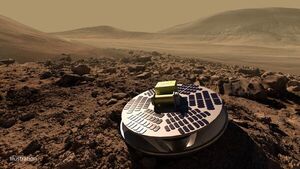
Why NASA Is Trying to Crash Land on Mars
"An illustration of SHIELD, a Mars lander concept that would allow lower-cost missions to reach the Red Planet’s surface by safely crash landing, using a collapsible base to absorb the impact. Credit: California Academy of Sciences Like a car’s crumple zone, the experimental SHIELD lander is designed to absorb a hard impact. NASA has successfully touched down on Mars nine times, relying on cutting-edge parachutes, massive airbags, and jetpacks to set spacecraft safely on the surface. Now engineers are testing whether or not the easiest way to get to the Martian surface is to crash. Rather than slow a spacecraft’s high-speed descent, an experimental lander design called SHIELD (Simplified High Impact Energy Landing Device) would use an accordion-like, collapsible base that acts like the crumple zone of a car and absorbs the energy of a hard impact. The new design could drastically reduce the cost of landing on Mars by simplifying the harrowing entry, descent, and landing process and expanding options for possible landing sites." [...]

New Arm-Based PIC Microcontrollers Create an Easier Way to Add Bluetooth Low Energy Connectivity
"PIC32CX-BZ2 MCU family includes built-in Bluetooth Low Energy and other wireless functionality with premium analog performance and comprehensive design support. Wireless connectivity has become a mandatory feature for many products but often increases the cost and complexity of system design since it generally must be added as part of the larger application. Microchip Technology Inc. (Nasdaq: MCHP) is introducing its first Arm Cortex®-M4F-based PIC microcontroller (MCU) family today that solves this wireless connectivity design challenge by integrating Bluetooth Low Energy functionality directly into one of a system’s most basic components, supported by one of the industry’s most comprehensive developer ecosystems. “Our PIC32CX-BZ2 MCU family removes barriers that have made it difficult to bring wireless applications to market, from availability problems and complexity challenges to regulatory certification hurdles and long-term support concerns,” said Steve Caldwell, vice president of Microchip’s wireless solutions business unit. “Our family tightly integrates wireless connectivity with an MCU that is built on our decades of specialized experience and backed by a vertical manufacturing approach that encompasses ICs, Microchip’s highly integrated software stacks, in-house module manufacturing and a customer-driven obsolescence practice.” Microchip’s PIC32CX-BZ2 family includes System-on-Chip (SoC) devices as well as global regulatory-certified, RF-ready modules. In addition to Bluetooth Low Energy functionality, the family includes Zigbee® stacks and Over the Air (OTA) update capabilities." [...]

VESA Releases DisplayPort 2.1 Specification
"Latest DisplayPort specification provides greater alignment with USB Type-C and USB4; adds new features for more efficient DisplayPort tunneling over USB4. The Video Electronics Standards Association (VESA®) announced today that it has released DisplayPort 2.1, the latest version of the DisplayPort specification, which is backward compatible with and supersedes the previous version of DisplayPort (DisplayPort 2.0). VESA has been working closely with member companies to ensure that products supporting DisplayPort 2.0 would actually meet the newer, more demanding DisplayPort 2.1 spec. Due to this effort, all previously certified DisplayPort 2.0 products including UHBR (Ultra-high Bit Rate) capable products – whether GPUs, docking station chips, monitor scalar chips, PHY repeater chips such as re-timers, or DP40/DP80 cables (including both passive and active, and using full-size DisplayPort, Mini DisplayPort or USB Type-C connectors) – have already been certified to the stricter DisplayPort 2.1 spec. Achieving a robust, end-to-end user visual experience remains the utmost priority for VESA's DisplayPort specification, whether across a native DisplayPort cable, via DisplayPort Alt Mode (DisplayPort over the USB Type-C connector), or tunneled through the USB4 link. As such, DisplayPort 2.1 has tightened its alignment with the USB Type-C specification as well as the USB4 PHY specification to facilitate a common PHY servicing both DisplayPort and USB4." [...]
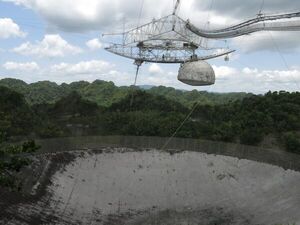
US opts to not rebuild renowned Puerto Rico telescope
"The National Science Foundation announced Thursday that it will not rebuild a renowned radio telescope in Puerto Rico, which was one of the world’s largest until it collapsed nearly two years ago. Instead, the agency issued a solicitation for the creation of a $5 million education center at the site that would promote programs and partnerships related to science, technology, engineering and math. It also seeks the implementation of a research and workforce development program, with the center slated to open next year in the northern mountain town of Arecibo where the telescope was once located. The solicitation does not include operational support for current infrastructure at the site that is still in use, including a 12-meter radio telescope or the Lidar facility, which is used to study the upper atmosphere and ionosphere to analyze cloud cover and precipitation data. The decision was mourned by scientists around the world who used the telescope at the Arecibo Observatory for years to search for asteroids, planets and extraterrestrial life. The 1,000-foot-wide (305-meter-wide) dish also was featured in the Jodie Foster film “Contact” and the James Bond movie “GoldenEye.” The reflector dish and the 900-ton platform hanging 450 feet above it previously allowed scientists to track asteroids headed to Earth, conduct research that led to a Nobel Prize and determine if a planet is potentially habitable." [...]
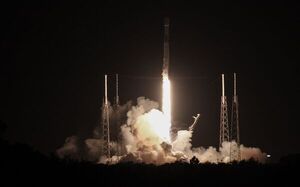
SpaceX launches 54 Starlink more satellites, lands rocket in 100th mission from Florida pad
"Thursday's launch was SpaceX's 48th orbital mission of the year so far. SpaceX's 100th launch from Space Launch Complex 40 at Florida's Cape Canaveral Space Force Station featured a set of 54 Starlink satellites, which launched to orbit on Thursday (Oct. 20) at 10:51 a.m. EDT (1451 GMT). "With the completion of today's launch, it marks SpaceX's 48th successful Falcon 9 mission of 2022," SpaceX Space Operations Engineer Siva Bharadvaj said during live commentary. This was the 10th flight overall for this particular Falcon 9. It's first stage touched down a little less than nine minutes later at sea on the SpaceX droneship A Shortfall of Gravitas. The satellites successfully deployed into low Earth orbit a little over 15 minutes after liftoff, according to SpaceX(opens in new tab)." [...]
Ciência e Tecnologia
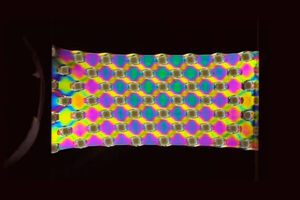
‘Smart Plastic’ Material is Step Forward Toward Soft, Flexible Robotics and Electronics
"Inspired by living things from trees to shellfish, researchers at The University of Texas at Austin set out to create a plastic much like many life forms that are hard and rigid in some places and soft and stretchy in others. Their success — a first, using only light and a catalyst to change properties such as hardness and elasticity in molecules of the same type — has brought about a new material that is 10 times as tough as natural rubber and could lead to more flexible electronics and robotics. The findings are published today in the journal Science. “This is the first material of its type,” said Zachariah Page, assistant professor of chemistry and corresponding author on the paper. “The ability to control crystallization, and therefore the physical properties of the material, with the application of light is potentially transformative for wearable electronics or actuators in soft robotics.” Scientists have long sought to mimic the properties of living structures, like skin and muscle, with synthetic materials. In living organisms, structures often combine attributes such as strength and flexibility with ease." [...]
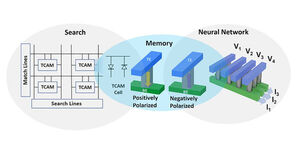
Rethinking the Computer Chip in the Age of AI
"The transistor-free compute-in-memory architecture permits three computational tasks essential for AI applications: search, storage, and neural network operations. Artificial intelligence presents a major challenge to conventional computing architecture. In standard models, memory storage and computing take place in different parts of the machine, and data must move from its area of storage to a CPU or GPU for processing. The problem with this design is that movement takes time. Too much time. You can have the most powerful processing unit on the market, but its performance will be limited as it idles waiting for data, a problem known as the “memory wall” or “bottleneck.” When computing outperforms memory transfer, latency is unavoidable." [...]
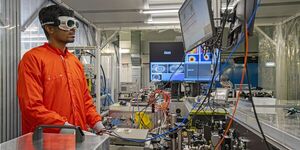
Light-driven molecular swing
"Scientists at the LMU and the Max Planck Institute of Quantum Optics have used ultrashort laser pulses to make the atoms of molecules vibrate and have gained a precise understanding of the dynamics of energy transfer that take place in the process. When light impinges on molecules, it is absorbed and re-emitted. Advances in ultrafast laser technology have steadily improved the level of detail in studies of such light-matter interactions. FRS, a laser spectroscopy method in which the electric field of laser pulses repeating millions of times per second is recorded with time resolution after passing through the sample, now provides even deeper insights: scientists led by Prof. Dr. Regina de Vivie-Riedle (LMU/Department of Chemistry) and PD Dr. Ioachim Pupeza (LMU/Department of Physics, MPQ) show for the first time in theory and experiment how molecules gradually absorb the energy of the ultrashort light pulse in each individual optical cycle, and then release it again over a longer period of time, thereby converting it into spectroscopically meaningful light. The study elucidates the mechanisms that fundamentally determine this energy transfer. It also develops and verifies a detailed quantum chemical model that can be used in the future to quantitatively predict even the smallest deviations from linear behavior." [...]
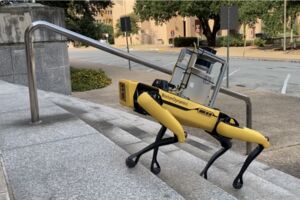
Can Robots and Humans Co-exist in Public? UT Campus Study Will Offer Answers
"Autonomous robots will soon rove the buildings and streets of The University of Texas at Austin campus. But unlike other commercial delivery services, this fleet of robots will help researchers understand and improve the experience of pedestrians who encounter them. A new grant to an interdisciplinary team of researchers at UT Austin will support the creation of a robot delivery network on campus, with the first deployments scheduled for early 2023. The researchers plan a five-year study focusing on what it takes to create, safely operate and maintain this kind of robot network, while also adapting with the humans who live and work around it. The team’s research promises to become the most extensive data about human-robot encounters in public spaces to date. Over time, the team will learn how state-of-the-art robotic autonomy and a real-world community can best co-exist." [...]

Clean-tech startup Quino Energy launches to create grid-scale battery infrastructure for greater use of wind and solar power
"A new startup, Quino Energy, aims to bring to market a grid-scale energy storage solution developed by Harvard researchers to facilitate more widespread adoption of renewable energy sources. About 12% of U.S. utility-scale electricity generation currently comes from wind and solar sources, which fluctuate with daily weather conditions. For wind and solar to play a greater role in the decarbonization of the electricity grid while reliably meeting consumer demand, grid operators recognize the need to deploy energy storage systems, but these have not yet proved cost-effective at scale. An innovative redox-flow battery now entering commercial development may help to tip the balance. Distinguished by its use of an aqueous, organic electrolyte, this flow battery was developed by Harvard materials scientists and chemists led by Michael Aziz and Roy Gordon at Harvard John A. Paulson School of Engineering and Applied Sciences (SEAS) and in the Department of Chemistry and Chemical Biology. Harvard’s Office of Technology Development (OTD) has granted Quino Energy an exclusive, worldwide license to commercialize energy storage systems using the chemistry identified by the labs, including quinone or hydroquinone compounds as the active materials in the electrolyte." [...]
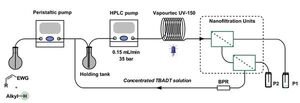
Bringing photocatalysis from laboratory to industry
"Combination of flow chemistry and nanofiltration results in viable process set-up Photocatalysis is considered a promising novel approach for the sustainable synthesis of, amongst others, active pharmaceutical ingredients and agrochemicals. In a paper in Nature Communications, researchers at the Flow Chemistry group of the University of Amsterdam’s Van ‘t Hoff Institute for Molecular Sciences now present an approach that helps to bring photocatalysis from laboratory to industry. Led by Prof. Timothy Noël and in cooperation with the British company Vapourtec, a continuous-flow system is presented that combines a micro-flow photoreactor with a nanofiltration device for photocatalyst recycling. Photocatalysis makes it possible to drive chemical conversions directly by sunlight, or by LED light powered by renewable electricity. As such, it presents an opportunity to render the chemical industry more sustainable and less dependent on fossil resources. However, the cost of a photocatalyst can be quite high, which often hampers industrial interest in photocatalysis." [...]

AI predicts physics of future fault slip in laboratory earthquakes
"Analyzing seismic signals, a natural-language processing approach ‘auto-fills’ the future physical state of a fault in an earthquake machine, with potential applications in Earth An artificial-intelligence approach borrowed from natural-language processing — much like language translation and auto-fill for text on your smartphone — can predict future fault friction and the next failure time with high resolution in laboratory earthquakes. The technique, applying AI to the fault’s acoustic signals, advances previous work and goes beyond by predicting aspects of the future state of the fault’s physical system. “Simply put, we predict future friction. That’s never been done, and it provides a potential path to near-term forecasting of earthquake timing in Earth,” said Chris Johnson, co-lead author of a paper on the findings in Geophysical Research Letters. Paul Johnson, corresponding author of the paper, geophysicist and Laboratory fellow at Los Alamos National Laboratory, leads a team that has made steady advances in applying various machine-learning techniques to the challenge of forecasting earthquakes in the laboratory and in the field. “The acoustic signals emitted by the laboratory fault contain foreshadowing information about the future fundamental physics of the system through the entire earthquake cycle and beyond, as we now show,” Paul Johnson said." [...]
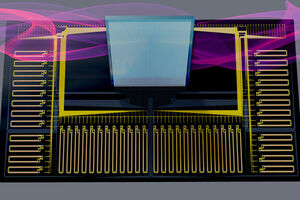
Deep learning with light
"A new method uses optics to accelerate machine-learning computations on smart speakers and other low-power connected devices. Ask a smart home device for the weather forecast, and it takes several seconds for the device to respond. One reason this latency occurs is because connected devices don’t have enough memory or power to store and run the enormous machine-learning models needed for the device to understand what a user is asking of it. The model is stored in a data center that may be hundreds of miles away, where the answer is computed and sent to the device. MIT researchers have created a new method for computing directly on these devices, which drastically reduces this latency. Their technique shifts the memory-intensive steps of running a machine-learning model to a central server where components of the model are encoded onto light waves." [...]
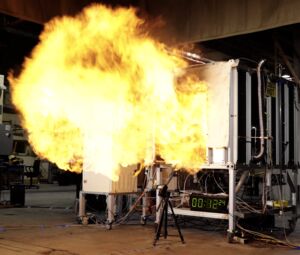
A Machine Learning-Based Solution Could Help Firefighters Circumvent Deadly Backdrafts
"A lack of oxygen can reduce even the most furious flame to smoldering ash. But when fresh air rushes in, say after a firefighter opens a window or door to a room, the blaze may be suddenly and violently resurrected. This explosive phenomenon, called backdraft, can be lethal and has been challenging for firefighters to anticipate. Now, researchers at the National Institute of Standards and Technology (NIST) have hatched a plan for informing firefighters of what dangers lie behind closed doors. The team obtained data from hundreds of backdrafts in the lab to use as a basis for a model that can predict backdrafts. The results of a new study, described at the 2022 Suppression, Detection and Signaling Research and Applications Conference, suggest that the model offers a viable solution to make predictions based on particular measurements." [...]

James Webb Space Telescope Uncovers Massive Galaxy Cluster Surrounding a Powerful Red Quasar
"UMD astronomer Sylvain Veilleux served as co-principal investigator of this latest glimpse into the early universe Astronomers peering into the early Universe have made a surprising new discovery thanks to the world’s most powerful space telescope. The James Webb Space Telescope’s spectroscopic capabilities, combined with its infrared sensitivity, enabled scientists to find a cluster of massive galaxies in the process of forming around an extremely red quasar. The result will expand the scientific community’s understanding of how galaxies in the early Universe coalesced into the cosmic web seen today. The object in question is an “extremely red” quasar that exists in the early Universe, 11.5 billion years ago. Quasars are a rare, incredibly luminous type of active galactic nucleus (AGN)—a term that describes a compact region at the center of a galaxy that emits enough electromagnetic radiation to outshine all the galaxy’s stars. This quasar is one of the most powerful known galactic nuclei that’s been seen at such an extreme distance." [...]

MIT engineers develop sensors for face masks that help gauge fit
"The system measures biological and environmental changes, and detects contact between the mask and the wearer’s skin. Wearing a mask can help prevent the spread of viruses such as SARS-CoV-2, but a mask’s effectiveness depends on how well it fits. Currently, there are no simple ways to measure the fit of a mask, but a new sensor developed at MIT could make it much easier to ensure a good fit. The sensor, which measures physical contact between the mask and the wearer’s face, can be applied to any kind of mask. Using this sensor, the researchers analyzed the fit of surgical masks on male and female subjects, and found that overall, the masks fit women’s faces much less closely than they fit men’s faces. “What we realized by analyzing our collected data from the individuals in the study was that the masks that we use in daily life are not very suitable for female participants,” says Canan Dagdeviren, the LG Career Development Professor of Media Arts and Sciences at MIT and the corresponding author of the study." [...]
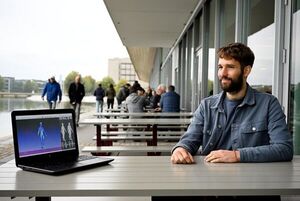
Skin and hair in 3D
"Mathematician Alessio Gallucci improves the mapping of human skin by using models and deep learning. With just a scan of your face and a little basic data, such as height and weight, mathematician Alessio Gallucci can produce a complete body scan. To improve the 3D analysis of our skin he used deep learning techniques. 3D analysis helps us to epilate and shave, but doctors use it too. It can help them with things like establishing the right drug dosage. Gallucci recently received his doctorate from the department of Mathematics and Computer Science." [...]

Build an advanced European quantum internet ecosystem
"The Quantum Internet Alliance has started a seven-year program to build an innovative Quantum Internet ecosystem in Europe. The first phase has a budget of 24 million euros. The research groups led by Tracy Northup and Benjamin Lanyon at the Department of Experimental Physics of the University of Innsbruck and the quantum computer spin-off AQT will be involved in the project. The European Commission has selected ‘quantum internet’ as a strategic area for investment to build a global quantum internet made in Europe. The Quantum Internet Alliance (QIA) will implement a seven-year program with the aim to develop a full-stack prototype network connecting distant cities. This way, QIA will drive an innovative European quantum internet ecosystem capable of leveraging QIA world-leading developments and that translates into innovative engineering solutions." [...]
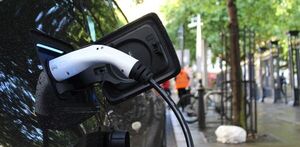
Watching lithium in real time could improve performance of EV battery materials
"Researchers have found that the irregular movement of lithium ions in next-generation battery materials could be reducing their capacity and hindering their performance. The team, led by the University of Cambridge, tracked the movement of lithium ions inside a promising new battery material in real time. It had been assumed that the mechanism by which lithium ions are stored in battery materials is uniform across the individual active particles. However, the Cambridge-led team found that during the charge-discharge cycle, lithium storage is anything but uniform. When the battery is near the end of its discharge cycle, the surfaces of the active particles become saturated by lithium while their cores are lithium deficient. This results in the loss of reusable lithium and a reduced capacity." [...]
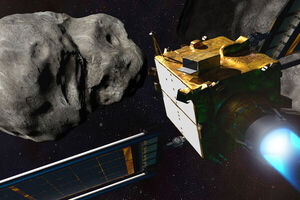
Method for decoding asteroid interiors could help aim asteroid-deflecting missions
"Astronomers have found a way to determine an asteroid’s interior structure based on how its spin changes during a close encounter with Earth. NASA hit a bullseye in late September with DART, the Double Asteroid Redirection Test, which flew a spacecraft straight at the heart of a nearby asteroid. The one-way kamikaze mission smashed into the stadium-sized space rock and successfully reset the asteroid’s orbit. DART was the first test of a planetary defense strategy, demonstrating that scientists could potentially deflect an asteroid headed for Earth. Now MIT researchers have a tool that may improve the aim of future asteroid-targeting missions. The team has developed a method to map an asteroid’s interior structure, or density distribution, based on how the asteroid’s spin changes as it makes a close encounter with more massive objects like the Earth." [...]

New way to make telescope mirrors could sharpen our view of the universe
"Femtosecond lasers used to fabricate precision ultrathin mirrors for space telescopes that capture star formation and other high-energy space events Researchers have developed a new way to use femtosecond laser pulses to fabricate the high-precision ultrathin mirrors required for high-performance x-ray telescopes. The technique could help improve the space-based x-ray telescopes used to capture high-energy cosmic events involved in forming new stars and supermassive black holes. “Detecting cosmic x-rays is a crucial piece of our exploration of the universe that unveils the high-energy events that permeate our universe but are not observable in other wavebands,” said research team leader Heng Zuo, who performed the research at MIT Kavli Institute for Astrophysics and Space Research and is now at the University of New Mexico. “The technologies our group developed will help telescopes obtain sharp images of astronomical x-rays that can answer many intriguing science questions.” X-ray telescopes orbit above the Earth’s atmosphere and contain thousands of thin mirrors that must each have a precisely curved shape and be carefully aligned with respect to all the other mirrors. In Optica, Optica Publishing Group’s journal for high-impact research, the researchers describe how they used femtosecond laser micromachining to bend these ultrathin mirrors into a precise shape and correct errors that can arise in the fabrication process. “It is difficult to make ultra-thin mirrors with an exact shape because the fabrication process tends to severely bend the thin material,” said Zuo." [...]

Artificial intelligence powers record-breaking all-in-one miniature spectrometers
"Using Artificial Intelligence (AI) to replace optical and mechanical components, researchers have designed a tiny spectrometer that breaks all current resolution records. We see light and colours around us every day. However, to analyse the information it carries, we must analyse light using spectrometers, in the lab. These devices detect sparkles and substances that our eyes would otherwise not notice. Now, an international team of researchers, including the University of Cambridge, have designed a miniaturised spectrometer that breaks all current resolution records, and does so in a much smaller package, thanks to computational programmes and artificial intelligence. The new miniaturised devices could be used in a broad range of sectors, from checking the quality of food to analysing starlight or detecting faint clues of life in outer space." [...]

New Laboratory To Explore The Quantum Mysteries Of Nuclear Materials
"Replete with tunneling particles, electron wells, charmed quarks and zombie cats, quantum mechanics takes everything Sir Isaac Newton taught about physics and throws it out the window. Every day, researchers discover new details about the laws that govern the tiniest building blocks of the universe. These details not only increase scientific understanding of quantum physics, but they also hold the potential to unlock a host of technologies, from quantum computers to lasers to next-generation solar cells. But there’s one area that remains a mystery even in this most mysterious of sciences: the quantum mechanics of nuclear fuels. EXPLORING THE FRONTIERS OF QUANTUM MECHANICS Until now, most fundamental scientific research of quantum mechanics has focused on elements such as silicon because these materials are relatively inexpensive, easy to obtain and easy to work with. Now, Idaho National Laboratory researchers are planning to explore the frontiers of quantum mechanics with a new synthesis laboratory that can work with radioactive elements such as uranium and thorium." [...]

AI answers the call for quail information
"A new model gives wildlife managers the ability to gather the necessary data in a matter of minutes When states want to gauge quail populations, the process can be grueling, time-consuming and expensive. It means spending hours in the field listening for calls. Or leaving a recording device in the field to catch what sounds are made—only to spend hours later listening to that audio. Then, repeating this process until there’s enough information to start making population estimates. But a new model developed by researchers at the University of Georgia aims to streamline this process. By using artificial intelligence to analyze terabytes of recordings for quail calls, the process gives wildlife managers the ability to gather the data they need in a matter of minutes." [...]
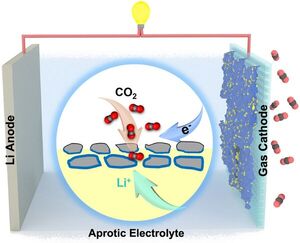
CityU chemists boost eco-friendly battery performance using catalysts with unconventional phase nanostructures
"The metal-carbon dioxide battery is a promising and environmentally friendly technology, but its energy efficiency is limited. Recently, a research team co-led by chemists from City University of Hong Kong (CityU) discovered an innovative way to overcome this problem by introducing an unconventional phase nanomaterial as a catalyst, boosting battery energy efficiency up to 83.8%. The study reveals a novel design of catalysts for the new generation of meta-gas batteries that can contribute to carbon neutral goals. The metal-carbon dioxide battery can provide durable electricity (high energy density) for electronics, and enable carbon dioxide (CO2) fixation without extra energy consumption from an external circuit to convert CO2 greenhouse gas emissions into value-added products (Figure 1). In particular, the lithium-carbon dioxide battery has high theoretical energy density (1876 Wh kg-1), making it a promising candidate for next-generation high-performance energy conversion and storage technology. However, metal-CO2 batteries still suffer from sluggish reaction kinetics." [...]

Fast-as-lightning 3D Microprinting with Two Lasers
"Printing objects from plastic precisely, quickly, and inexpensively is the goal of many 3D printing processes. However, speed and high resolution remain a technological challenge. A research team from the Karlsruhe Institute of Technology (KIT), Heidelberg University, and the Queensland University of Technology (QUT) has come a long way toward achieving this goal. It developed a laser printing process that can print micrometer-sized parts in the blink of an eye. The international team published the work in Nature Photonics. (DOI: 10.1038/s41566-022-01081-0) Stereolithography 3D printing is currently one of the most popular additive manufacturing processes for plastics, both for private and industrial applications." [...]
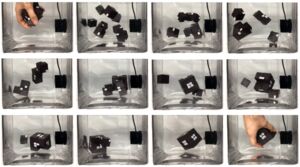
Reprogrammable materials selectively self-assemble
"Researchers create a method for magnetically programming materials to make cubes that are very picky about what they connect with, enabling more-scalable self-assembly. While automated manufacturing is ubiquitous today, it was once a nascent field birthed by inventors such as Oliver Evans, who is credited with creating the first fully automated industrial process, in flour mill he built and gradually automated in the late 1700s. The processes for creating automated structures or machines are still very top-down, requiring humans, factories, or robots to do the assembling and making. However, the way nature does assembly is ubiquitously bottom-up; animals and plants are self-assembled at a cellular level, relying on proteins to self-fold into target geometries that encode all the different functions that keep us ticking. For a more bio-inspired, bottom-up approach to assembly, then, human-architected materials need to do better on their own. Making them scalable, selective, and reprogrammable in a way that could mimic nature’s versatility means some teething problems, though." [...]
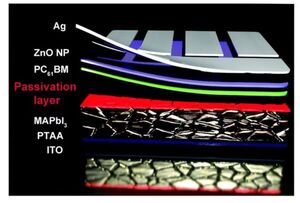
New Study Unveils Vertically Oriented 2D Ruddlesden–Popper Phase Perovskite Passivation Layer for Efficient and Stable Inverted PSCs
"Their findings have been published in the August 2022 issue of Energy & Environmental Science (ESS, IF = 39.714). A research team, led by Professor Hyesung Park in the Department of Materials Science and Engineering at UNIST has succeeded in manufacturing potentially high efficiency, stable, and scalable perovskite solar cells (PSCs) via vacuum deposition apparatus, a method of fabricating organic light-emitting display devices (OLEDs). Such method is also advantageous for the mass production of batteries, which is expected to further accelerate the commercialization of the PSCs, according to the research team. In this study, the research team demonstrated highly efficient and stable PSCs with a vacuum-processed Ruddlesden–Popper (RP) phase perovskite passivation layer. By controlling the deposition rate of the RP phase perovskite, which directly influenced its crystallographic orientation, the research team successfully obtained a highly ordered 2D perovskite passivation layer. The 2D perovskite layer passivated the bulk perovskite defects and promoted the charge transport efficiency in the PSC." [...]
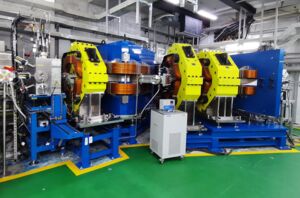
Physicists Discover New Isotope Actinium-204
"A research team at the Institute of Modern Physics (IMP) of the Chinese Academy of Sciences (CAS), together with their collaborators, has recently synthesized a new isotope, actinium-204, which is the lightest actinium isotope so far discovered and the fourth actinium isotope beyond the proton-drip line. The study has been published in Physics Letters B. Scientists performed the experiments at the Heavy Ion Research Facility in Lanzhou (HIRFL) and the China Accelerator Facility for superheavy Elements (CAFE2). The new isotope actinium-204 was produced in the fusion-evaporation reaction and identified via the recoil-α correlation at the gas-filled recoiled separators. This is the 35th nuclide synthesized at IMP. Scientists then determined its α-particle energy and half-life to be 7948 keV and 7.4 ms, respectively." [...]

Thinnest ferroelectric material ever paves the way for new energy-efficient devices
"Discovery of intriguing material behavior at small scales could reduce energy demands for computing. As electronic devices become smaller and smaller, the materials that power them need to become thinner and thinner. Because of this, one of the key challenges scientists face in developing next-generation energy-efficient electronics is discovering materials that can maintain special electronic properties at an ultrathin size. Advanced materials known as ferroelectrics present a promising solution to help lower the power consumed by the ultrasmall electronic devices found in cell phones and computers. Ferroelectrics — the electrical analog to ferromagnets — are a class of materials in which some of the atoms are arranged off-center, leading to a spontaneous internal electric charge or polarization. This internal polarization can reverse its direction when scientists expose the material to an external voltage." [...]
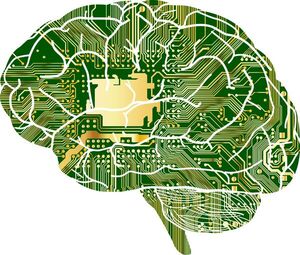
Our brains use quantum computation
"Scientists from Trinity believe our brains could use quantum computation after adapting an idea developed to prove the existence of quantum gravity to explore the human brain and its workings. The discovery may shed light on consciousness, the workings of which remain scientifically difficult to understand and explain. Quantum brain processes could also explain why we can still outperform supercomputers when it comes to unforeseen circumstances, decision making, or learning something new Scientists from Trinity believe our brains could use quantum computation after adapting an idea developed to prove the existence of quantum gravity to explore the human brain and its workings. The brain functions measured were also correlated to short-term memory performance and conscious awareness, suggesting quantum processes are also part of cognitive and conscious brain functions. If the team’s results can be confirmed – likely requiring advanced multidisciplinary approaches –they would enhance our general understanding of how the brain works and potentially how it can be maintained or even healed. They may also help find innovative technologies and build even more advanced quantum computers." [...]
Documentação
A documentação é parte essencial do processo de aprendizagem e a Internet além de artigos interessantes de explorar também tem alguma documentação em formato PDF interessante de ler. Todos os links aqui apresentados são para conteúdo disponibilizado livremente pelo editor do livro.
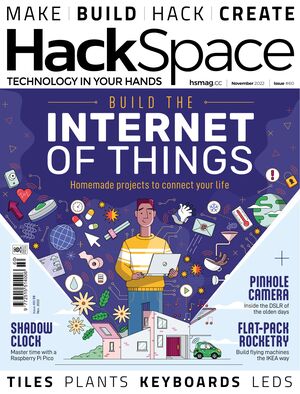
HackSpace magazine #60
"The Internet of Things is playground for makers. From practical projects such as pet feeders and automatic blind, to silly things like a texting pot plant, there are as many ways of connecting ordinary object to the internet as you can imagine. Let’s explore! - Meet the mom behind Geek Mom Projects - Build a flatpack rocket - Turn 3D printing filament into compost - Trap a fairy in a lamp (well, a GIF of a fairy)" [...]
Projetos Maker
Diversos Projetos interessantes.
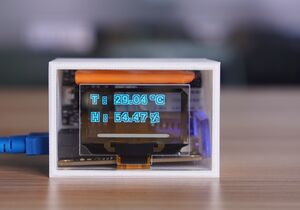
Make a Weather Station Using Environmental Sensor
"On a daily basis, people use weather forecasts to determine what to wear on a given day or to plan travel or events However, it only tells temperature in a relatively large range. Sometimes we need environmental parameters in a specific place like a fishpond, greenhouse, an open field, etc. Here I want to know the exact temperatures during a day on my terrace. So I decide to make a weather monitoring station that outputs the real-time data I need. I got this environmental sensor from DFRobot that can measure temperature, humidity, pressure, ambient light, and UV, which is well suitable for this project. This summer is much hotter than previous ones, and many places got record-breaking temperatures of over 40℃." [...]

VINCA Reader
"This project replaces the VINCA DTCR-03 "RS232" Digital Caliper Data Transfer Cable with a WiFi enabled ESP8266/ESP32. The VINCA DCLA-0605 Caliper only supports data transfer to a computer over a proprietary cable. Decoding the Serial Protocol The connector is a USB micro, so I cut down a cable and started looking at the lines with an oscilloscope. It was easy to identify that the D+ and D- lines have clock and data. Since it has a clock, that means it's a synchronous protocol, even though Amazon says it's RS232. I wrote a Python script to extract the 24 bits being sent at 150ms intervals and record them to a CSV." [...]
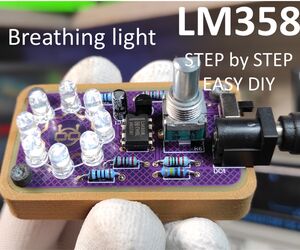
How to Make a 12V LED Breathing Light
"Maybe you saw this circuit elsewhere but certainly you never saw it in such customized design, this is an absolute DIY project that you can follow to produce your own Breathing light circuit based on the LM358 Operational amplifier and I'm putting the full details in the following instructions. If you hate reading then maybe the above video will help you. What you will learn here: - Set the circuit by picking up the appropriate components. - draw the circuit schematic and its related PCB design. - Design a customized housing for your device. - Bring the hardware and perform the assembly." [...]
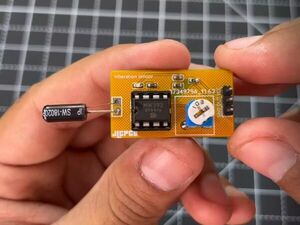
DIY Vibration sensor using OP-AMP
"A simple project, making a vibrational sensor module which can be used with microcontroller digitally and brief theory behind op-amps Recently, I got a vibration sensor from one of my friend, which is highly sensitive to vibrations and I want to convert this into a fully fledge vibration sensor module. The sensor is SW-18010P has two wire interface. This one is also known for waterproof action, shock spring switch. We will use this sensor with operational amplifier to get a digital output. SW-18010P sensor: This sensor has a spring inside, not any type of directional/ angle vibrations. Sensor can be triggered using a simple hit on the outer cover of the sensor." [...]
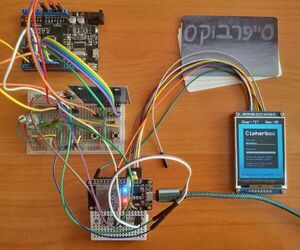
Cipherbox V3.0
"With the development of cryptanalysis and new hacking techniques, the cost of accessing your data without your authorization continues to decline, making it easier and more attractive for different sides to get it. I'm not going to get into details about the motivation of each side and the goals they're trying to achieve by obtaining your data. Instead, I would like to focus on the solution to that problem. In my opinion, the only way to keep your data private is to raise the costs of unauthorized access to it as high as possible, ideally higher than any reward that a third side can get by obtaining your data. Doing so puts away the incentives to access your data without your permission. To raise the cost of unauthorized access to your data, I've developed Cipherbox." [...]
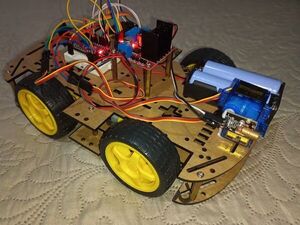
RC Car with laser turret!
"Arduino RC car, using a joystick shield and NRF24l01 modules. Initial Idea I already did a RC car using Arduino and it worked pretty well, but I think it needs something more. Things I used I used two NRF24L01+ modules to make the comunications between the car and the remote control. It has a impressed antenna on it's PCB and can reach a distance of 100 meters. " [...]
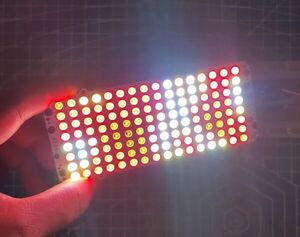
Custom 16x8 Ws2812 Matrix Project
"Hey guys how you doing? So here's something extraordinary, a custom Matrix entirely made from scratch. This Instrubales is about the whole built process of this matrix and its use. Following are the things used in this built- - WS2812B LEDs - Custom PCB - Arduino Nano - Breadboard - Jumper wires - Solder Paste" [...]

Using Rotary Encoders with Arduino interrupts
"Tutorial showing how to use Rotary Encoders and making you realise how different they are from Rotary potentiometers In this video I will show you how to use Rotary Encodedrs with Arduino Interrupts.It is quite fascinating that this component looking similar to the rotary potentiometer is actually totally different.Hope you would find this tutorial useful. " [...]
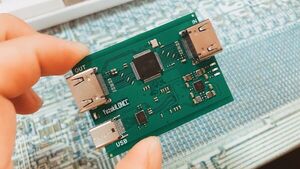
YuzukiLOHCC PRO
"Yuzuki Loop Out HDMI Capture Card PRO CERN Open Hardware Licence Version 2 - Permissive Low cost USB3.2Gen1 HDMI-USB Video Acquisition With Loop Out (Loop Out HDMI Capture Card) Ultra low cost Loop Out HDMI-USB Video Acquisition (HDMI Capture Card) based on MS2130 and MS9332 + MS8003 MS2130 is a USB 3.2 Gen 1 high-definition video and audio acquisition chip, which is internally integrated with USB 3.2 Gen 1 Device controller, data transceiver module, and audio and video processing module. The MS2130 can transmit the audio and video signals input by HDMI to a PC, smartphone, or tablet for preview or collection through the USB 3.2 Gen 1 interface. The MS2130 output supports YUV422 and MJPEG modes, and is compatible with Windows, Linux, Android and Mac OS systems. Support OBS Studio, Camera, and FFmpeg. - Support HDMI 4Kx2K@30Hz and HDMI 2.0, YCbCr420 4Kx2K@60Hz Loop Out - Support 10/12/16 bit Deep Color for Loop Out - Adaptive input equalization for Loop Out - Integrated pre-programmed HDCP keys for Loop Out - Embedded EDID RAM for Loop Out - USB Type-C USB3.2 Gen 1 interface - Full height HDMI x 2 - Compatible with DVI 1.0 - Support YUV&JPEG output - Compatible with UVC 1.0, UAC 1.0 - Support audio capture - Support video capture - Maximum video input 3840x2160@30 - The highest output resolution is 4096x2160@15 - Support 1920x1080@60 - Support Windows 7 Above, macOS 10 and later, Linux, Android and so on - Standed UVC 1.0, Support OBS Studio, Camera, FFmpeg and so on. " [...]

Cyclotron Clock
"3D Printed ESP32 WROOM 32D Perpetual Timepiece Using a wooden base, 3D printed parts and an ESP32 WROOM 32D module to display the time on four 28BYJ-48 Stepper Motor driven "perpetual rotating" digits. Time is stored on a RTC and can be synchronized to a Master Clock if required. The clock movement and electronics are housed in a 3D printed framed Perspex case. " [...]
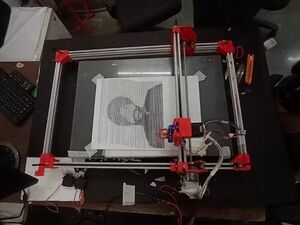
Cnc pen plotter
"Gcode Controlled Drawing Plotter with Arduino I want to do a pen plotter. There are many plotter systems. I am doing it, the system that uses the belt. GRBL and Arduino CNC Machine Working Principle Overview The main parts I use for this are Arduino UNO R3 and CNC Shield, A4988 Step Motor Driver. " [...]

Build a UV Level Monitoring Budgie - Using IoT and Weather Data APIs
"Meet Sonny the UV Budgie - an automata IoT bird who looks up online weather data from the Met Office API and announces the UV index for the day and the week ahead (in doing so, he flaps his wings automaton-style!). The image of the display shows actual data in the UK heatwave where burn times were 20mins max. The Budgie warns the user of what the midday sun or 'Peak UV' will be (i.e. what's the most protection you need if leaving the house in the morning - when the UV might initially be low, but could get seriously high at noon! ), and serves as a reminder that, for example, sun protection is still relevant on a cloudy day. The UV Budgie was developed as a way to engage kids in becoming more aware of the importance of being ‘sun-safe’ by 'listening to Sonny's advice'." [...]

How to use ADC On Raspberry Pi Pico using MicroPython
"In this guide we will show you how to use the ADC on your Raspberry Pi Pico using MicroPython. We will also go over some of the basic concpt In this tutorial let’s know aboutRaspberry Pi Pico ADC, How it works, what are its uses, Pinout, and finally how to read the ADC value of it with a MicroPython example code. In this tutorial, we will use the Pico board to perform an ADC conversion. The Raspberry Pi Pico has four 12-bit ADC channels, but one of them is connected to the internal temperature sensor. The remaining ADC is found at GPIO26, GPIO27, and GPIO28 as ADC0, ADC1, and ADC2, respectively. Read also." [...]

Arduino based WiFi mobile robotic arm with on-board camera
"This mobile robot with a 4 DOF robotic arm and camera can be controlled remotely from a host PC without the need to be in line of sight. Mobile Arm Robots combine the advantages of mobile platforms and robotic manipulator arms. The extra degrees of freedom from the mobile platform provide user with more workspace and accessibility. Such robots find their place in industrial, health-care and home-care sectors. This project shows how to build a basic WiFi remote controlled 4 wheeled mobile robot with a 4 axes robotic arm manipulator mounted on its chassis. It has an on-board WiFi camera mounted on the robotic arm." [...]
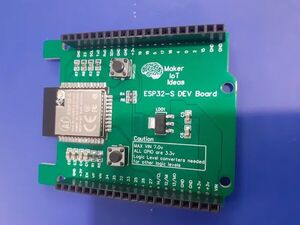
ESP32-S Development Board
"Get rid of the breadboard while using your ESP-32S, and also reuse this for a small project that doesn't need a custom PCB The ESP32-S is, at least in my opinion, one of the most versatile microcontrollers available to the Maker at this moment. It ticks almost all of my boxes for features required in a microcontroller, with a lot of gpio’s, WiFi, and Bluetooth, as well as a lot of storage space for code. I do however have an issue with it, which I usually get around by designing a custom circuit board with a specific purpose. This is great for a project, but as most projects do not start on a custom-built circuit board, I am usually required to use a breadboard module. This is where my problems start. These modules are cumbersome to fit on a breadboard, to say the least, taking up a lot of space, and leaving very little space to connect to its pins with anything else." [...]
Secção Videos
Videos interessantes.
That's all Folks!



